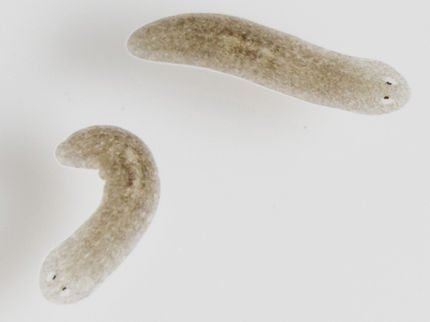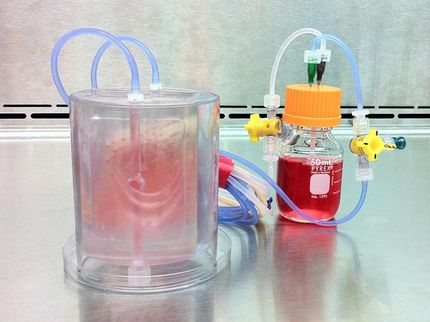Finding a cellular Neverland: How stem cells stay childlike
Despite their celebrated "immortality," the capacity of embryonic stem (ES) cells for endless division has its limits. After a very extended childhood spent dividing in a culture dish, even stem cells tend to grow up and assume adult roles as workaday nerve, muscle, or blood cells, never to return to their youthful state. How some ES cells succeed in recapturing lost cellular innocence and start anew once they begin maturing is described in a forthcoming study in Proceedings of the National Academy of Sciences, authored by a team of scientists from the Salk Institute for Biological Studies.
The team, headed by professor Juan Carlos Ispizúa Belmonte, Ph.D., of the Gene Expression Laboratory and including professor Fred Gage, Ph.D., of the Laboratory of Genetics, demonstrates how a DNA-binding protein called Nanog coaxes mouse ES cells trying to differentiate into muscle cells back into an immature state. Nanog is named for the legendary Celtic land Tir nan Og where people remained forever young
"Embryonic stem cells represent enormous hope for treating otherwise incurable diseases," says Belmonte. "But before we can design therapeutic strategies or introduce these cells into patients, we must learn how to differentiate them into specific cell types and how to tame their formidable proliferating ability," he explains.
Nanog is a critical factor required for what cell biologists call "stemness," which is defined by two qualities: the ability of ES cells to divide or "self-renew" and their plasticity in assuming the identity of almost any cell type, which is also known as "pluripotency."
In a study published earlier this year, the same Belmonte and Gage lab team demonstrated that a few ES cells in a culture dish tended to lose stemness and evolve into muscle cell precursors, most likely goaded by a muscle differentiation factor known as BMP. But when those maturing cells were forced to produce Nanog, they reverted to their naïve state and regained pluripotency.
Atsushi Suzuki, PhD., a former postdoctoral fellow in the Belmonte lab, was the lead author of both that and the present study. "It was exciting because nobody knew that 'reverse differentiation' occurred in ES cell cultures," he said referring to the first report. "And nobody knew how Nanog maintains an undifferentiated ES cell population."
Their current study explains how. When BMP turns ES cells into muscle it activates a protein called Smad1, a DNA-binding protein that, in opposition to Nanog, switches on genes responsible for muscle cell fate. Smad1 can only do this when assisted by generic factors known as co-activators, which stimulate gene expression.
The team found that in ES cells attempting to differentiate prematurely, Nanog actually binds to Smad1 protein and interferes with its ability to recruit those obligatory coactivators, thereby rendering Smad1 powerless to initiate muscle gene expression. With Smad1 out of the game and Nanog in full control, cells revert to their forever-young state.
"We found that in suitable conditions, differentiated cells are still capable of producing stem cells as descendants," says Suzuki. "The molecular mechanisms that we identified here might be used to regenerate stem cells from differentiated cells."
Identifying the Nanog/Smad1 feedback loop indeed has significant implications for regenerative medicine. Animals like salamanders readily regenerate severed limbs as adults, but mammals cannot. In fact, mammals have a limited repertoire of tissues they can regenerate, and some essential ones, such as nerves and cardiac muscle, are not on that list.
For human tissue regeneration to become a viable therapy for conditions like neurodegeneration or diabetes, clinicians will likely need to artificially manipulate factors that return adult brain or pancreatic cells to a cellular "Tir Nan Og" to restore adult cell types. "Our findings open the possibility of de-differentiating cells in our body so that they can replace diseased cells," says Belmonte.
Suzuki, possibly inspired by his new job as a research scientist at the Research Unit for Organ Regeneration in Kobe, Japan, explains it this way: "Just as humans can start over in life, differentiated cells can also take on other fates following the generation of undifferentiated stem cells."























































